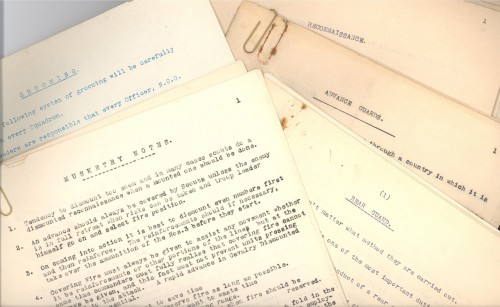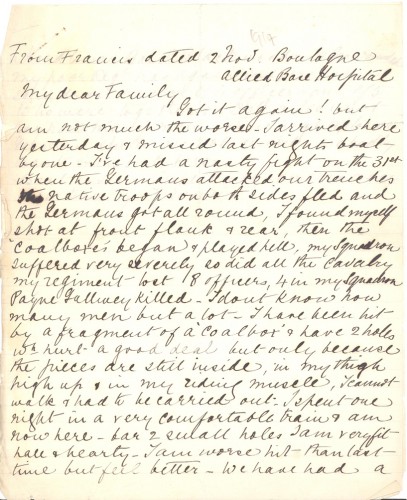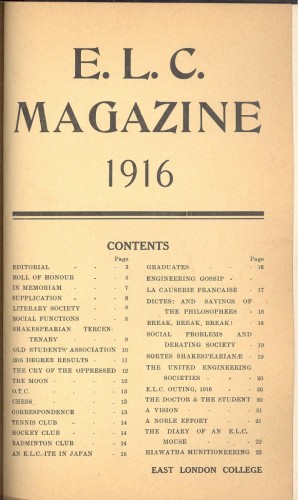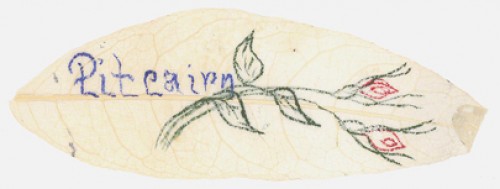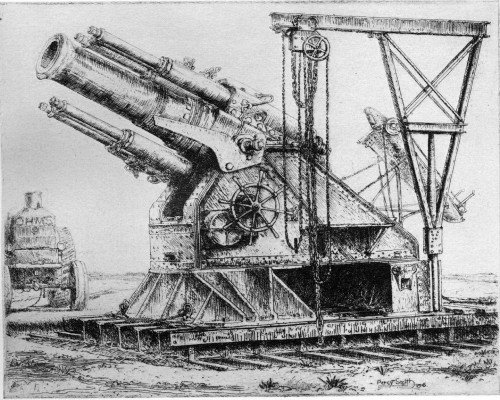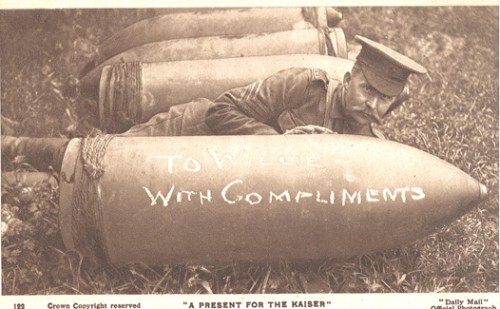Collection of 'How To' letters, c.1918.
Typed letters belonging to A.M. Grenfell giving explanatory notes about the advance guard, rear guard, reconnaissance, musketry and horse grooming. Extracts include: reconnaissance notes that 'information regarding the enemy'۪s dispositions and the features of the country is absolutely essential for success in war'. Rear Guard notes that 'the conduct of a rear guard depends for its success almost entirely on the character, determination, skill, and energy displayed by its commander'.
Click on the link above to download the transcribed 'How to' letters. PDF's may take a while to download depending on the speed of your internet connection.
Images Courtesy of Queen Mary University of London Archives.

